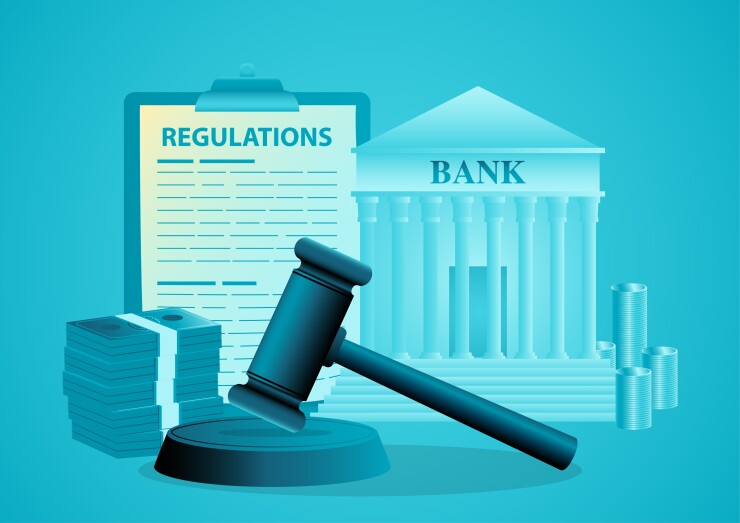
Predictions for the U.S. economy in 2023 were dire. The hangover from the pandemic and the war in Ukraine presented obstacles — from rapid inflation to slow supply chains — that could easily tip America's finances into a steep recession. On top of that, inflation hit eye-popping numbers and looked terrifyingly stubborn. Bank failures caused by basic risk-management mistakes added to the turbulence. Things felt grim.
But the economy has remained relatively robust. Price inflation has materially slowed, supply chains have strengthened and the anticipated recession has not taken root. A recession could still happen, of course, but if it does it looks like it will be more minor than once thought, largely because of strong employment. Even as the Fed has raised interest rates, job growth and spending has remained strong.
All good, then, right? Well, maybe not.
Economic risk from new regulation is a real threat. Washington decision-makers, in their zeal to fix things, too often create problems despite their well-intentioned efforts. This is especially true when they misdiagnose problems.
Take, for example, the Federal Reserve's effort to expand its bank regulatory requirements and to force banks to meaningfully increase the amount of capital they keep on hand. There's nothing wrong with occasionally reevaluating capital requirements as situations change, but its strategy right now is flawed.
In theory, keeping capital buffers strong is what the Dodd-Frank Act's stress tests on banks were meant to do. By testing institutions annually or semi-annually under various economic downturn scenarios, the Fed should be able to guard against race-to-the-bottom capital regimes by pointing out how losses could materialize under economic duress. They also allow for a more formal conversation between regulators and banks regarding where risks might appear.
The managing director of Arjuna Capital led a successful shareholder activist campaign in 2018 that led to dozens of large companies reporting their true gender pay gap numbers. Now she is pursuing companies who are moving too fast with advanced AI.
The problem with reliance on this mechanism is that if the stress tests themselves are unreliable, their results will be, too. Flawed stress tests and inadequate risk management — not capital — was the problem with the regional banks that failed earlier this year. Federal agency examinations didn't sufficiently look at the scenario that eventually brought trouble to the banks: The cost of their short-term funding exceeded the yield from their assets.
Instead of improving their supervisory approach, financial regulators are using the blunter tool of requiring higher capital requirements across the board. This poses serious risks, including to the entire U.S. economy. Higher capital means less lending, usually at higher rates. Higher rates slow economic growth, which already is limping along. Capital levels have greatly improved over the past decade. It can't be that every time one bank fails at basic risk management the entire system needs more capital.
Not to be outdone, though, the Securities and Exchange Commission (SEC) is pushing its own highly ambitious agenda. The agency has been proposing new rules at a furious rate — so much so that the committees of jurisdiction in Congress have been struggling to keep up with it.
Congressional hearings are a powerful part of checks and balances, but many of these provide lawmakers too little time to ask questions. As a result, the hearings have had limited usefulness in congressional efforts to rein in a frenzied SEC. Comment periods on proposed rules changes have been historically short, while the rules proposed have been unprecedented in their scope.
Many of the SEC proposals are designed to reengineer large swaths of U.S. capital markets. While these plans begin with good intentions, their sweeping implications cannot be fully analyzed or known, which means collateral damage cannot adequately be assessed. Yet this has not stopped the SEC from trying.
On everything from environmental risk reporting to securitization to equity market restructuring, the agency has been proposing changes at breakneck speed. Even the most well-meaning third-party analysts cannot adequately assess the risks and consequences, which is exactly what the Administrative Procedures Act and congressional oversight were meant to prevent.
The Biden administration should take time to think through how its ambitious regulatory agenda undercuts — and could eventually reverse — the many successes its economy has achieved. Inflation is declining, unemployment is low and steady and markets are resilient. This is no time to haphazardly pile financial regulation and additional costs on an American economy that seems otherwise set to avoid the catastrophes predicted just last year.






